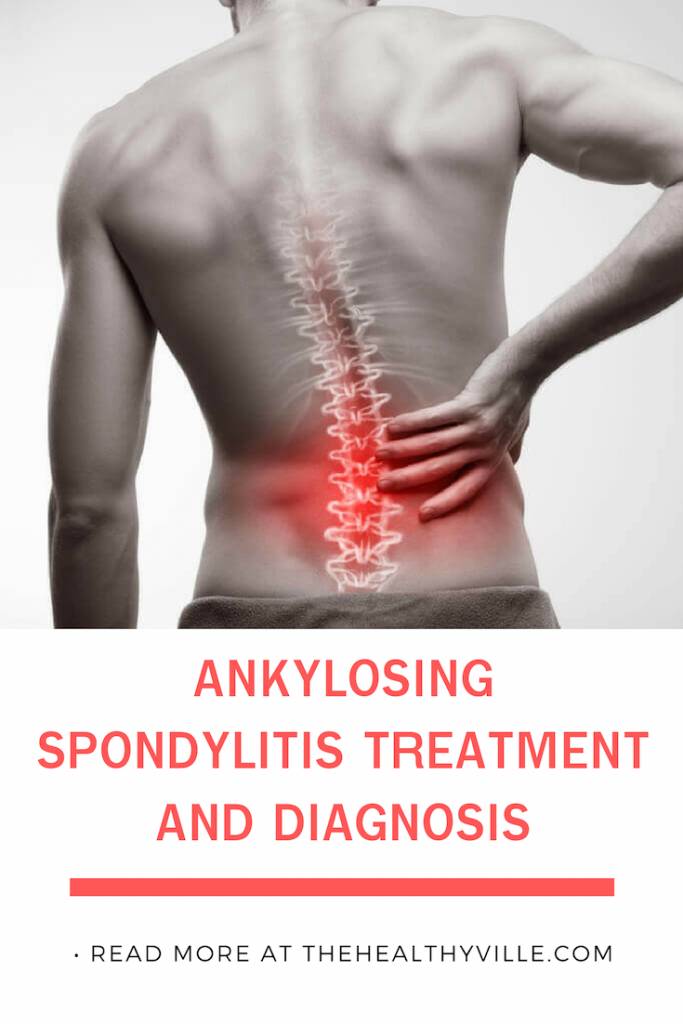Ankylosing spondylitis treatment will be of great aid to you with this chronic inflammatory disease that primarily affects the joints of the spine.
These joints tend to weld together, causing a limitation of mobility. In this way they make the column less flexible. For this reason, it is very common to adopt a stooped forward posture.
It is not known exactly what produces this disease, but that genetics plays an important role in its appearance. Most people who have this disease have the HLA-B27 gene. However, only some people with the gene develop the disease.
Symptoms of ankylosing spondylitis
In ankylosing spondylitis, it is possible to produce a union of some vertebrae, with the consequent rigidity and associated pain.
This rheumatic disease produces outbreaks of inflammation of the joints of the spine. Although there may be inflammation of other joints such as the shoulders, hips, knees or ankles.
The first symptoms of ankylosing spondylitis include night pain and stiffness in the lower back. Although this happens especially in the morning and after periods of inactivity. Neck pain and fatigue are also common.
Some of the most frequently affected areas are the joint between the base of the spine and the pelvis and those of the hips. However, it can also affect the points where the tendons and ligaments attach to the bones, especially in the spine.
Further info: Relieve Knee Tendons And Ligaments Pain And Strengthen Them Naturally Using This!
When there is ankylosing spondylitis, new bone is formed as part of the body’s attempt to heal itself. This new bone is closing the space between the vertebrae. In this way, you can merge sections from one vertebra to another.
Those parts of the spine become rigid and inflexible. The fusion can also stiffen the rib cage and decrease the capacity and function of the lungs.
Complications
Some of the complications of ankylosing spondylitis are:
- Ocular inflammation (uveitis): Uveitis is one of the most frequent complications of ankylosing spondylitis. It can cause the rapid onset of pain in the eyes, sensitivity to light and blurred vision.
- Damage to the heart valves: this disease can cause problems in the aorta. The inflamed aorta can affect the shape of the aortic valve in the heart, which will alter the functioning of the valve.
How can it be diagnosed?
There are criteria for the diagnosis of ankylosing spondylitis that include:
- Clinical criteria: as lumbar pain for more than 3 months that improves with exercise. But you cannot relieve it by resting. In addition, the limitation of the thoracic expansion is taken into account, as well as the mobility of the spine.
- Radiological criteria: as is the radiological evidence of inflammation of the sacroiliac joints.
- Depending on the criteria presented in the patient, the diagnosis of ankylosing spondyloarthritis will be:
- Defined: when there is a clinical criterion and a radiological one.
- Probable: in case the patient presents 3 clinical or 1 radiological criteria.
- Blood and urine tests can help support the diagnosis by the presence in blood of the HLA-B27 antigen. Likewise, they can determine the greater or lesser intensity of the inflammatory process suffered by the patient.
Ankylosing spondylitis treatment
Along with rehabilitation and surgery, analgesic medications are used to relieve the pain caused in the joints.
The treatment of ankylosing spondylitis combines the different pharmacological options and rehabilitation.
- Nonsteroidal anti-inflammatory drugs (NSAIDs) and analgesics: are pharmacological treatments which aim at controlling pain and reducing or suppressing joint inflammation. In this way, the quality of life of the patient improves. Also, by relieving discomfort, it will help to improve nighttime rest.
- Disease modifying drugs (DMARDs): these drugs act on the immune system.
- Biological drugs: these drugs, although they fail to cure, get in many patients to control the symptoms of the disease.
- Rehabilitation: continuous, in combination with pharmacological treatments. Physical and respiratory exercises improve the mobility of the spine and muscle strength.
- Surgery: Surgery is only used occasionally, particularly when the joints are badly damaged and mobility is lost.
By combining the possible treatments, you can avoid rigidity and stagnation. In addition, they can help you prevent other disorders of muscle and locomotor function. In turn, it is convenient that you practice exercises that strengthen the back like swimming.
Don’t forget to SHARE the symptoms, diagnosis and ankylosing spondylitis treatment with your friends and family on your social networks!

